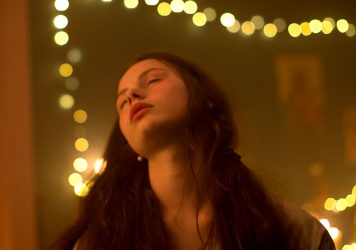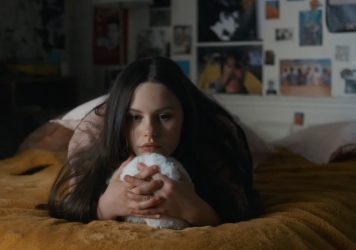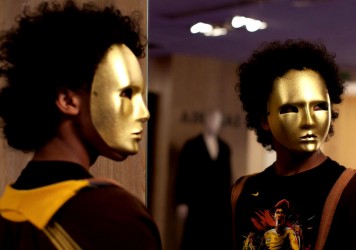
Across three timelines, a pair of lovers find each other again and again in Bertrand Bonello's ambitious, genre-defying latest.
Of the many pop culture assets that Bertrand Bonello’s The Beast calls to mind, perhaps the most obvious is Michel Gondry’s Eternal Sunshine of the Spotless Mind, about a couple whose devastating break-up prompts them to erase all memory of each other. Despite this, the pair are destined to reunite, with the now-iconic instruction “Meet me in Montauk.” Gondry’s countryman Bonello shares an interest in the cosmic nature of destiny and love – but takes a wildly different approach to it all. Based on Henry James’ novella The Beast in the Jungle (this is the second adaptation this year and fourth since 2017) it’s a reflection on fate and emotion; what we choose to express and suppress.
Across decades we witness Gabrielle (Léa Seydoux) and Louis (George MacKay) come into each other’s orbit – in 1910, 2014, and 2044. When we watch them meet at a party during the Belle Époque, Louis informs Gabrielle it’s not the first time they’ve met, and she previously told him something that disturbed him. It is revealed that Gabrielle is plagued by a sense of extraordinary fear, as though something terrible lurks for her right around the corner (the ‘Beast’ from which James’ book and accordingly Bonello’s film draw their title). Despite this fear and her marriage to an earnest dollmaker, she feels drawn towards Louis.
Meanwhile, in 2014 Gabrielle is a model in Los Angeles, attempting to transition into an acting career. Louis is a bitter, misogynistic and entitled young man who despises women due to his lack of romantic success and vlogs about how unfairly the world has treated him. In the future timeline, an unmentioned plague has decimated society and AI has taken over. The few humans left mostly work menial jobs; Gabrielle applies for a more challenging position, only to be told she must undergo a procedure in order to confront her past lives, which the AI claim are making her unbalanced. In the lobby of the building she briefly meets Louis, who is also having an interview. They share a brief but charged moment, before Gabrielle is sent on a journey through her past in the coming days.
Over the course of two and a half hours, we accompany Gabrielle on a tour of her past lives, as she confronts potent feelings and the cruelty of fate. Despite being a sort of love story, Gabrielle is often alone, and the film relies on Lea Seydoux’s excellent performance. She differentiates between the three versions of Gabrielle in the most subtle ways, so that they avoid feeling like the same woman but resemble one another. MacKay – who arrived at the film after the tragic death of Bonello’s close friend Gaspard Ulliel – is a great foil, notably when portraying a tragic incel (that’s a compliment, really!) whose thinly-concealed rage threatens to pour over any second.
Recurring motifs – pigeons, dolls, fortune tellers, Roy Orbison’s Evergreen – further thread the three narratives together, creating a coherence despite the out-there concept. These totems both ground and haunt Gabrielle (particularly the pigeons) as she realises she must choose between repression and expression of her emotions in a world where it’s considered detrimental. But Bonello’s impish sense of humour means love is never quite as simple as finding the person you’re meant to be with.
Although the first 40 minutes in the buttoned-up period setting do drag a little, once The Beast finds its groove, its imaginative and melodramatic spirit are hard to resist. Even Bonello’s decision to replace the end credits with a QR code feels in keeping with the film’s themes of erasure and isolation. It’s a big swing for the fences from the singular French filmmaker and one that absolutely pays off.
Published 3 Sep 2023

By Ella Kemp
A history lesson turns into a horror movie in Bertrand Bonello’s bold reclamation of the zombie legend.

Bertrand Bonello's bouncing off the walls in this free-associative grab-bag of early lockdown anxieties.

Bertrand Bonello stuns with this coolly exacting, lightly experimental take on the impulse modern terrorism.